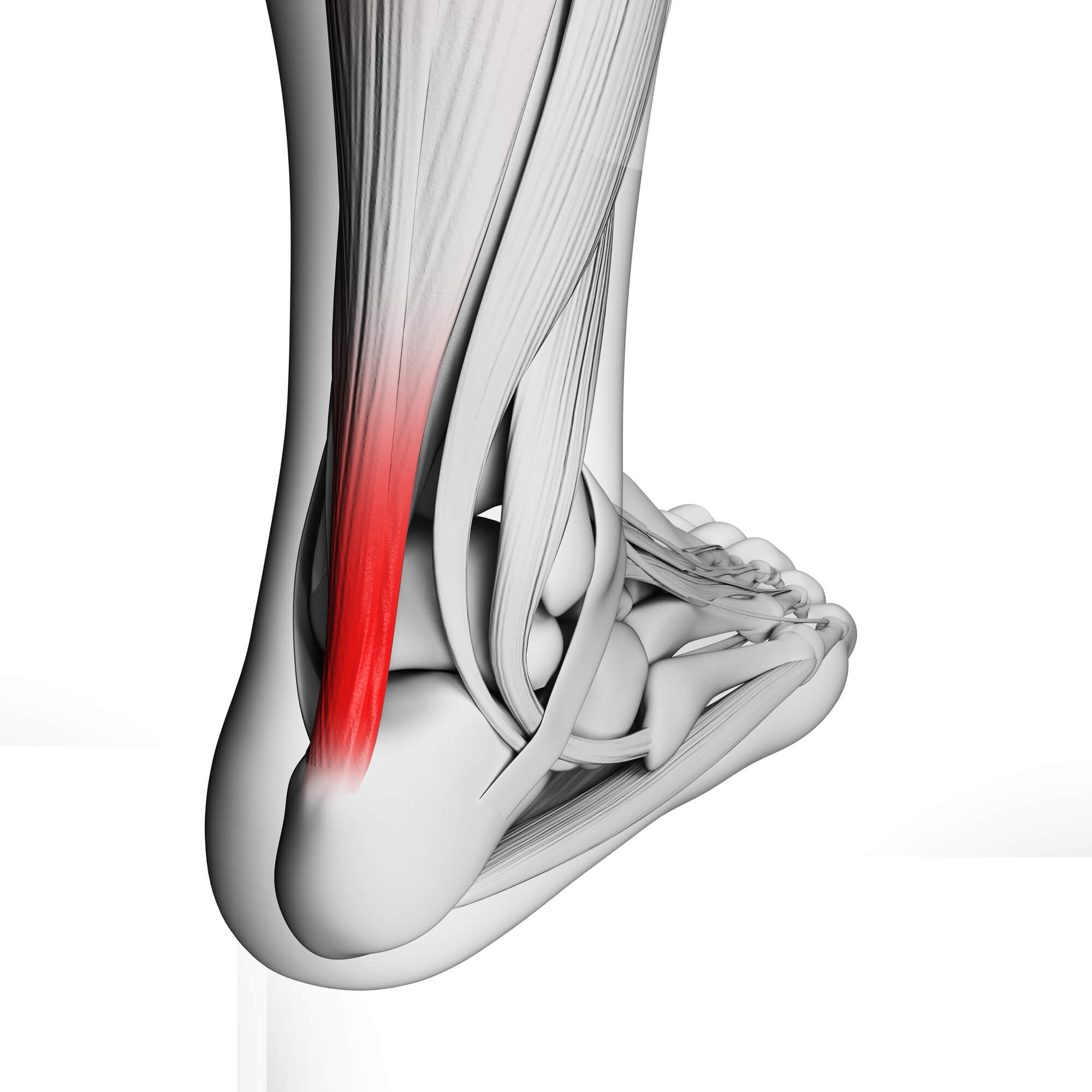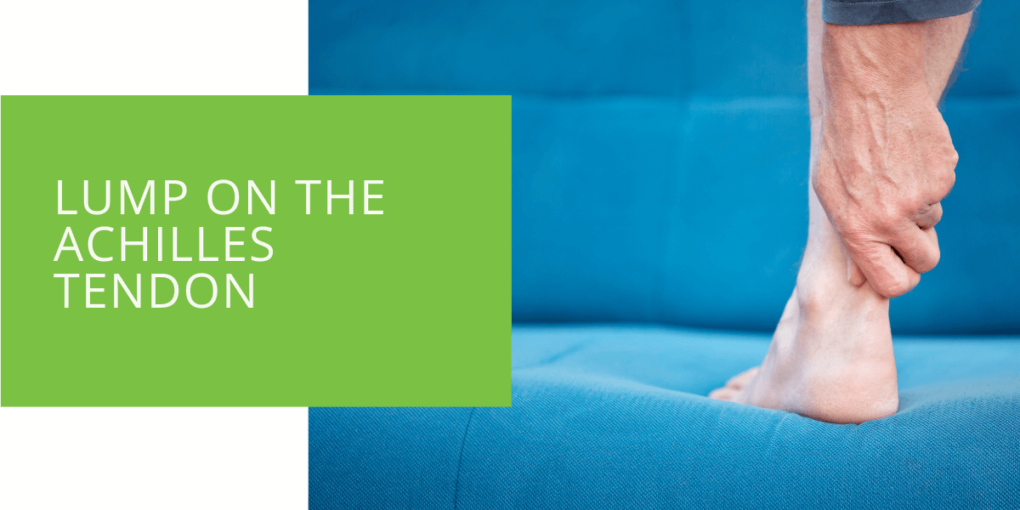Understanding a Lump on the Achilles Tendon
The Achilles tendon, the largest tendon in the body, can be a source of pain and discomfort when it develops a lump. This condition can be challenging, but understanding its causes, symptoms, and treatment options can help you manage it effectively. In this article, we'll deeply dive into the causes of a lump on the Achilles tendon and explore the best ways to treat and manage it.
Various factors, including overuse injuries, poor footwear choices, and certain medical conditions, can cause a lump on the Achilles tendon. Understanding the root cause of this condition is essential to prevent further complications and alleviate discomfort. By learning about the different treatment options available, you can ensure that you receive the best care possible. Whether you're an athlete or seeking relief from pain, this guide will provide the information you need to take control of your health and get back to your active lifestyle.
Key Takeaways
- A lump on the Achilles tendon can be caused by overuse, tendinopathy, or deformities, leading to pain and discomfort.
- Prompt diagnosis by a podiatrist is crucial to determine the underlying cause and provide appropriate treatment.
- Treatment options range from conservative measures like rest and physical therapy to advanced interventions to relieve pain and prevent recurrence.
The Achilles Tendon: Anatomy and Function
Before we delve into the specifics of a lump on the Achilles tendon, let's first understand the anatomy and function of this remarkable structure. The Achilles tendon, also known as the heel cord, attaches your calf muscle to your heel bone (calcaneus). Its primary function is to transmit the force generated by the calf muscle to the heel bone, allowing us to point our toes downward and push off the ground when we walk, run, or jump. It's a critical component of the foot and ankle complex, making it susceptible to various injuries and conditions.
What Causes a Lump on the Achilles Tendon?
A lump on the Achilles tendon can have multiple causes, and understanding them is crucial for proper diagnosis and treatment. Here are some common factors that may lead to the development of a lump on this tendon:
Overuse and Tendon Injuries
Overuse of the Achilles tendon, often seen in athletes or individuals who engage in repetitive activities like running or jumping, can cause micro-tears and inflammation within the tendon. Over time, these injuries can lead to the formation of a lump. If you've been pushing your physical limits or suddenly increased your activity level, your Achilles tendon may be at risk.
Achilles Tendinopathy
Achilles tendinopathy is a term used to describe chronic tendon issues, including Achilles tendonitis. Inflammation and degeneration of the tendon can result in a lump or thickening along the tendon. It's a condition often associated with pain and discomfort in the back of the ankle.
Deformity and Insertional Achilles Tendonitis
Structural abnormalities or deformities in the Achilles tendon can contribute to the development of a lump. Insertional Achilles tendonitis, where the tendon attaches to the heel bone, can lead to inflammation and a lump in the middle of the Achilles tendon.
Identifying and Diagnosing a Lump
Recognizing a lump on the Achilles tendon is the first step toward seeking proper diagnosis and treatment. If you experience pain swelling or notice a lump in the middle or at the base of your Achilles tendon, it's essential to consult a podiatrist or foot and ankle specialist. They will conduct a thorough examination, possibly including imaging studies like ultrasound or MRI, to accurately diagnose the condition.
Prompt diagnosis is crucial because, in some cases, a lump on the Achilles tendon can indicate a more severe problem, such as a partial or complete tendon rupture. Early intervention can prevent further complications and expedite the rehabilitation process.

Treatment Options for a Lump on the Achilles Tendon
The treatment approach for a lump on the Achilles tendon varies depending on the underlying cause and the severity of the condition. Here are some treatment options your podiatrist may recommend:
Conservative Treatment
- Rest: Giving your Achilles tendon time to heal is often the first step. Avoid activities that exacerbate the pain.
- Ice, Compression, and Elevation (RICE): Applying ice, compression, and keeping your foot elevated can help reduce inflammation and provide pain relief.
- Physical Therapy: A structured rehabilitation program can strengthen the tendon and improve flexibility.
- Orthotics and Footwear: Custom orthotics and appropriate footwear can alleviate stress on the Achilles tendon and aid in recovery.
Advanced Treatment Options
- Surgical Interventions: In severe cases or when conservative measures fail, surgical intervention may be necessary. Procedures such as tendon debridement or lengthening may be performed.
- Biologic Treatments: Emerging therapies like platelet-rich plasma (PRP) or stem cell injections are being explored to promote tendon healing and reduce inflammation.
Managing Pain and Discomfort
Pain relief is a significant concern for individuals with a lump on the Achilles tendon. Your podiatrist may recommend pain-relief measures like non-steroidal anti-inflammatory drugs (NSAIDs) or physical modalities such as ultrasound therapy. It's essential to follow your healthcare provider's guidance on pain management to ensure your comfort during the healing process.
Preventing Recurrence
Preventing the recurrence of a lump on the Achilles tendon is essential for long-term foot and ankle health. Your podiatrist can guide preventive measures, including:
- Proper warm-up and stretching exercises before physical activity.
- Gradual progression of activity levels to avoid overuse.
- Proper footwear selection and custom orthotics.
- Maintenance of a healthy weight to reduce stress on the Achilles tendon.
Living with a Lump on the Achilles Tendon
Living with a lump on the Achilles tendon can be challenging, but you can maintain an active lifestyle with proper care and adherence to your podiatrist's recommendations. It's important to be patient during rehabilitation and not rush back into strenuous activities to prevent re-injury.
Conclusion
A lump on the Achilles tendon is a concerning issue that should not be ignored. If you experience pain or notice any deformities in your Achilles tendon, seek immediate evaluation by a podiatrist or foot and ankle specialist. We, as experts in the field, have seen the significant impact that early intervention and personalized treatment plans can have on patients' outcomes. Don't let a lump on your Achilles tendon cause unnecessary discomfort or complications. Schedule an appointment with us today, and let's work together to get you back on your feet, pain-free and confident in your mobility.
FAQ
How do I get rid of an Achilles tendon lump?
To effectively address an Achilles tendon lump, it's essential to consult a podiatrist. Treatment options may include rest, physical therapy, orthotics, and, in severe cases, surgical interventions. The specific approach depends on the cause and severity of the lump.
Can you get a tumor on your Achilles tendon?
Yes, while rare, tumors can develop on the Achilles tendon. If you notice a lump on your Achilles tendon, it's crucial to seek professional evaluation to rule out any serious conditions and determine the appropriate course of action.
What does a lump on my Achilles tendon mean?
A lump on your Achilles tendon may indicate various underlying issues, including overuse, tendinopathy, or deformities. It often leads to pain and discomfort. Prompt diagnosis by a podiatrist is essential to determine the cause and provide the right treatment to address the lump effectively.

